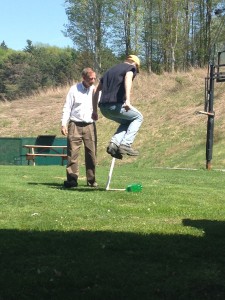One of the questions that we consistently reflect on at MHS is how to motivate students who feel disconnected from school and learning. This year, one group of teachers expressed the idea that our school needs a place for students to experiment and create with their own hands. We have many students who are eager for this type of learning, but with increased academic requirements and limited budgets, our wood shops and consumer arts courses disappeared a long time ago. Other than Project Lead the Way, which is not available for everyone, there is very little opportunity for students to have the “hands-on” learning experiences that they are craving.
After great consideration, I hit upon the idea of a “MakersSpace.” MakersSpaces have become wildly popular in the past few years. According to MakersSpaces.Com, a Makers Space is a “community center of tools” and is a wonderful way to democratize engineering education. (http://spaces.makerspace.com) Makers Spaces can encompass all sorts of materials, from computers, sewing machines, hammers, etc. The design is up to the creator. Through the task of plain old tinkering, MakerSpaces help to build student confidence, foster deeper student understanding and teach collaboration.
Fortunately for our school, I was given the opportunity to write a grant through our local BOCES to help provide students with the chance to create, design and build. Under the leadership of my Earth Science teacher, Trace Keller, we decided to incorporate the idea of a Maker Space through a new club next year entitled “Robot Wars.” The club will be a place where we can encourage playfulness and inspire curiosity among students. Students will have the chance to create robots, small machines or just “tinker” if they choose. The club will be our “laboratory of inquiry” where students can work with the questions in mind, “how do things work? And why do things work that way?”
The teacher ran an introductory activity to attract students to the club, and it was a huge hit. From just a soda bottle, some tubing and a marshmallow, students were able to create stomp rockets that flew thirty feet off the ground. It was so much fun and drew the attraction of students who don’t normally stay after school. The success of the activity solidified our thinking, and we enthusiastically moved forward to create our MakersSpace Club.
To get started, we ordered $5,000 worth of materials, including everything from glue guns, and goggles to Lego robot kits. Although we were fortunate to receive our funding from a state grant, Edutopia wrote a very helpful post that lists several other possibilities for schools to get needed resources.
http://www.edutopia.org/blog/6-strategies-funding-makerspace-paloma-garcia-lopez
At MHS, we hope to create an inspirational and innovative lab where through inquiry, play, and collaboration, students’ curiosity and understanding deepens. Although we are starting small with an after-school club, the possibilities for further growth are endless. Hopefully, one day we can find space for a full-time playroom where students can just stop by to experiment.
Information on this topic is readily available for anyone who wants to start their own MakerSpace. The following link is a helpful place to begin. http://oedb.org/ilibrarian/a-librarians-guide-to-makerspaces/
